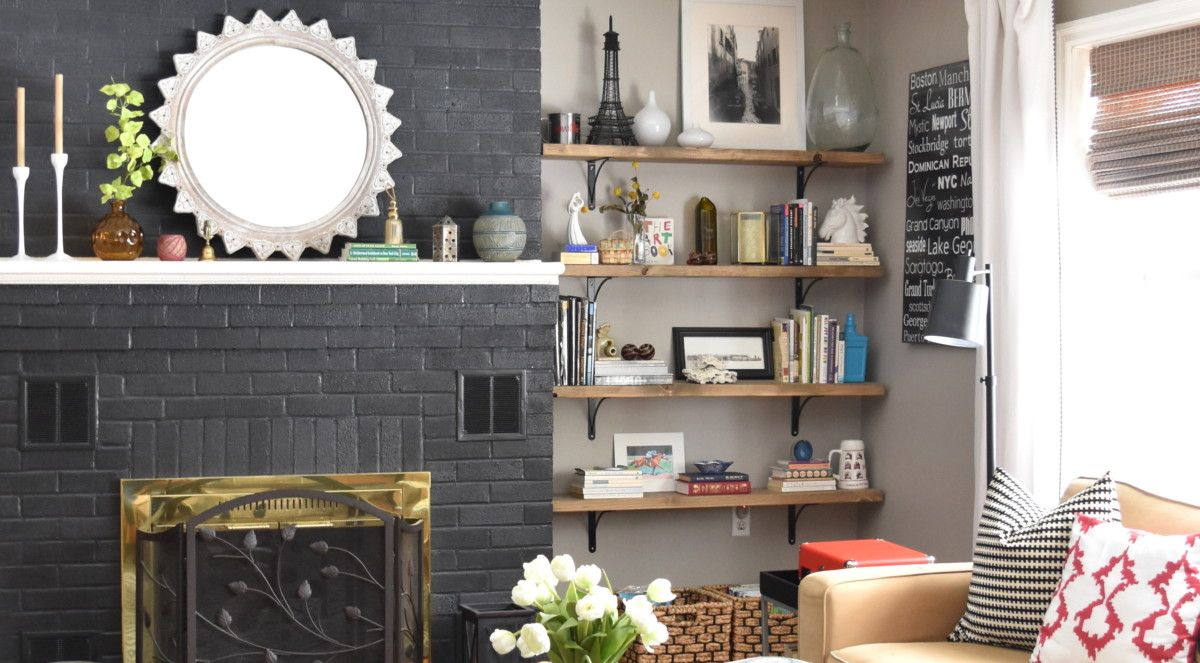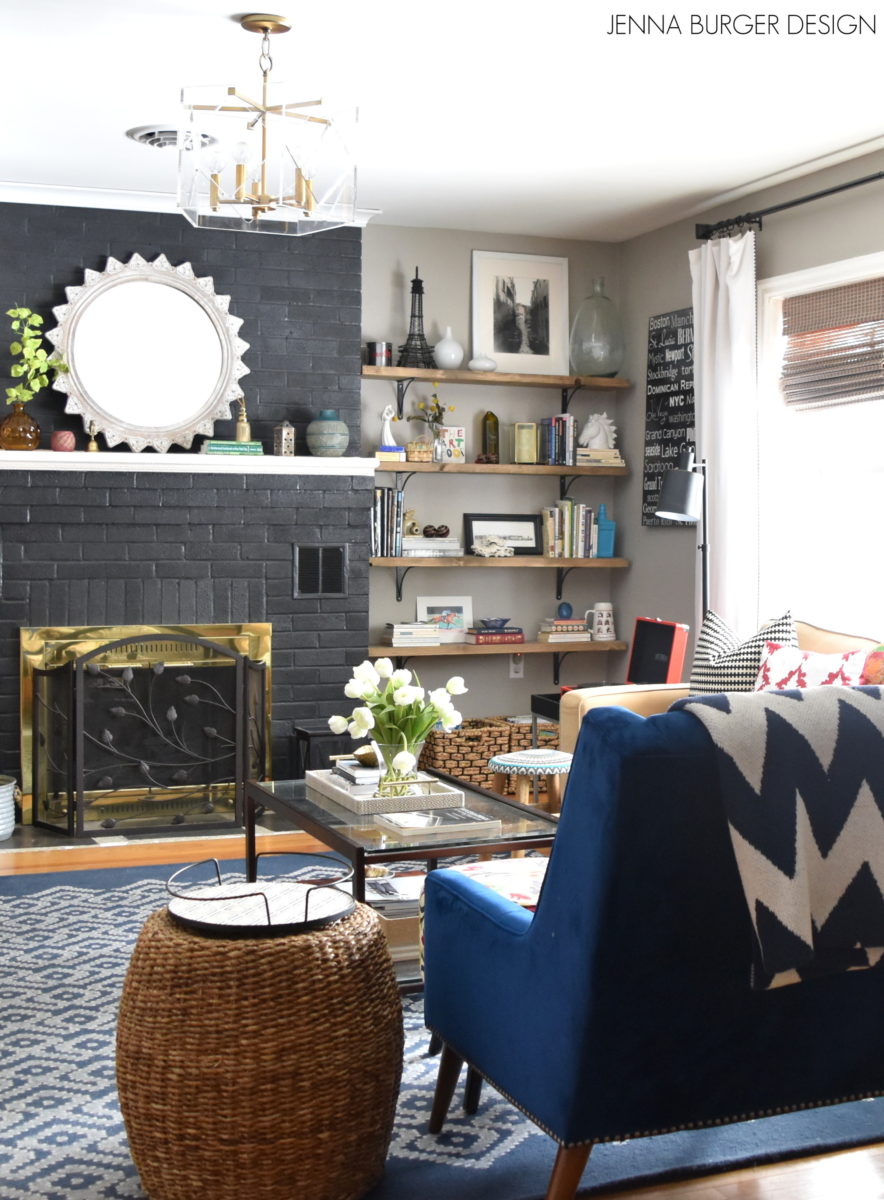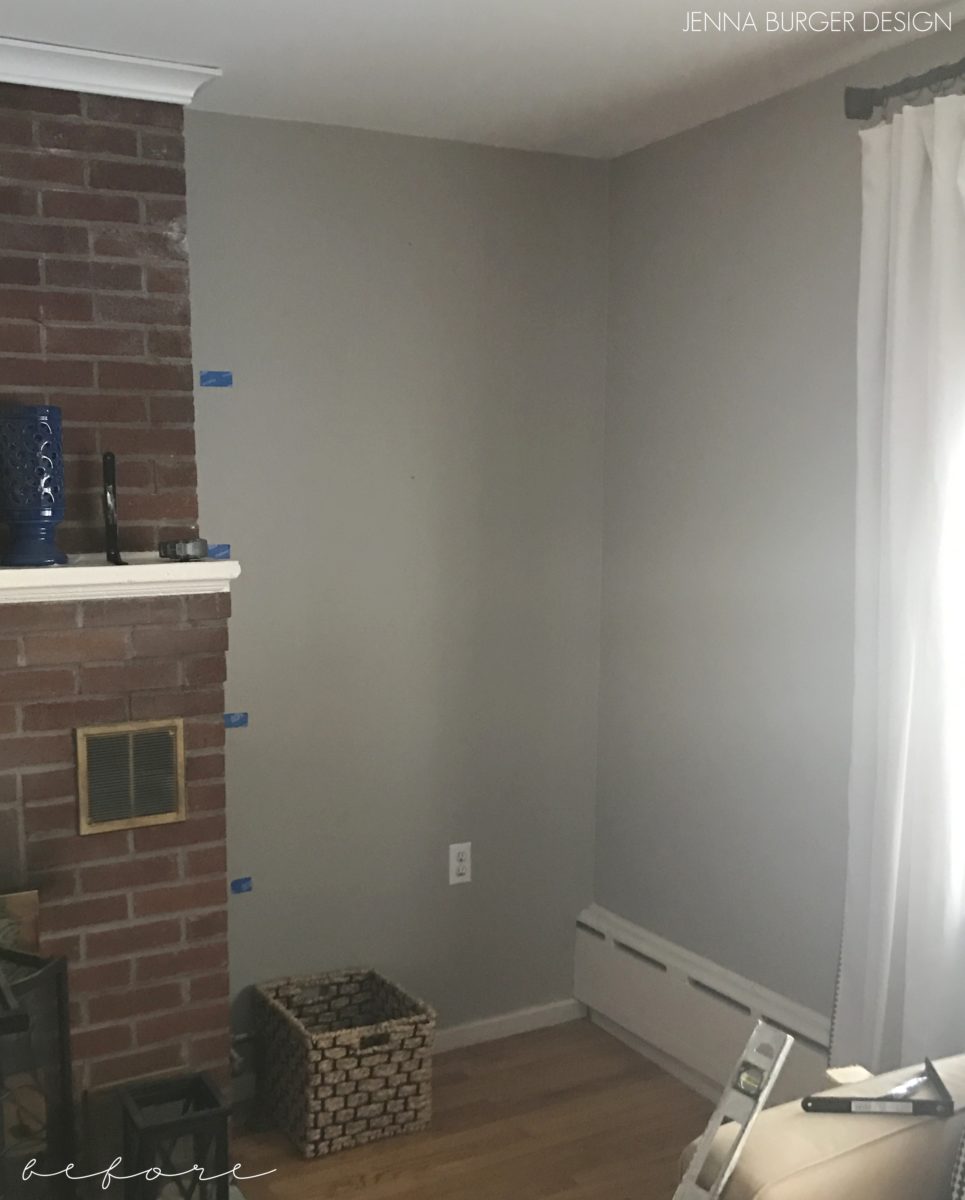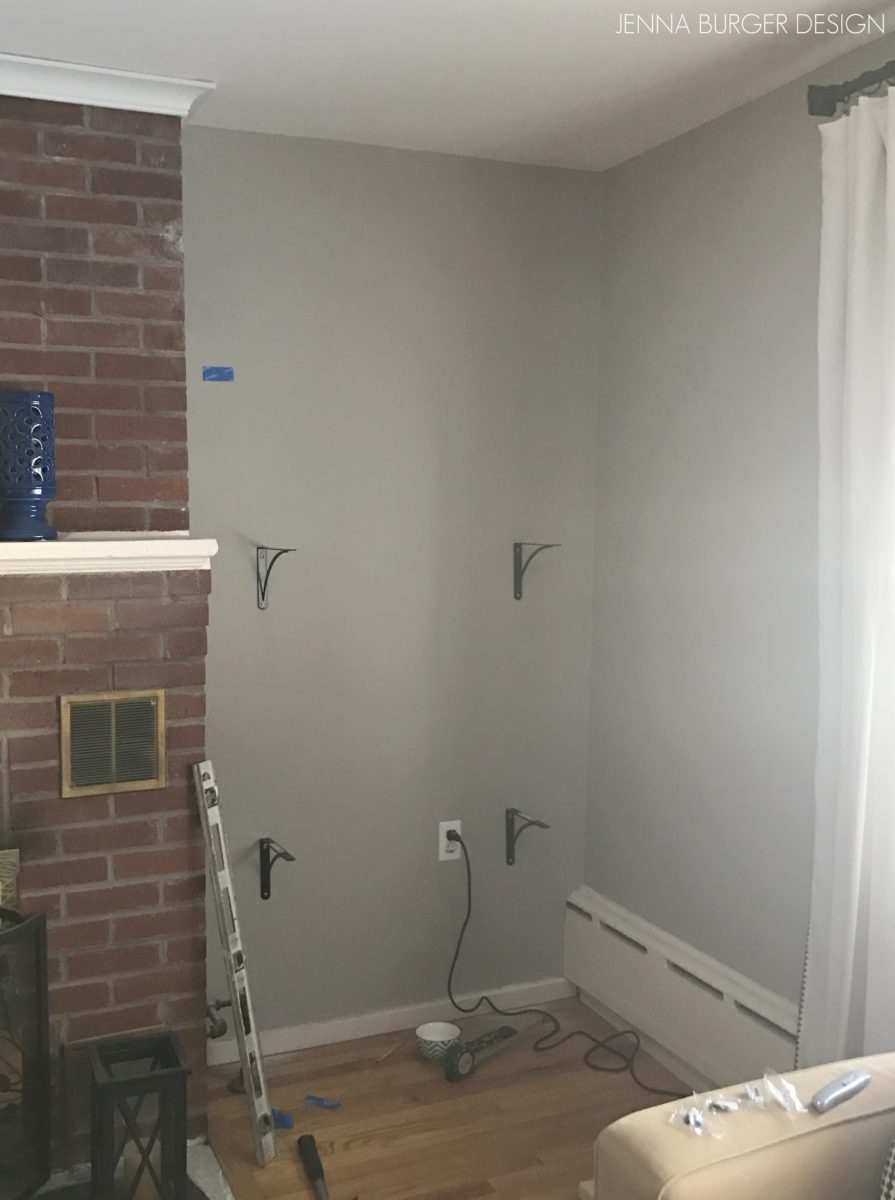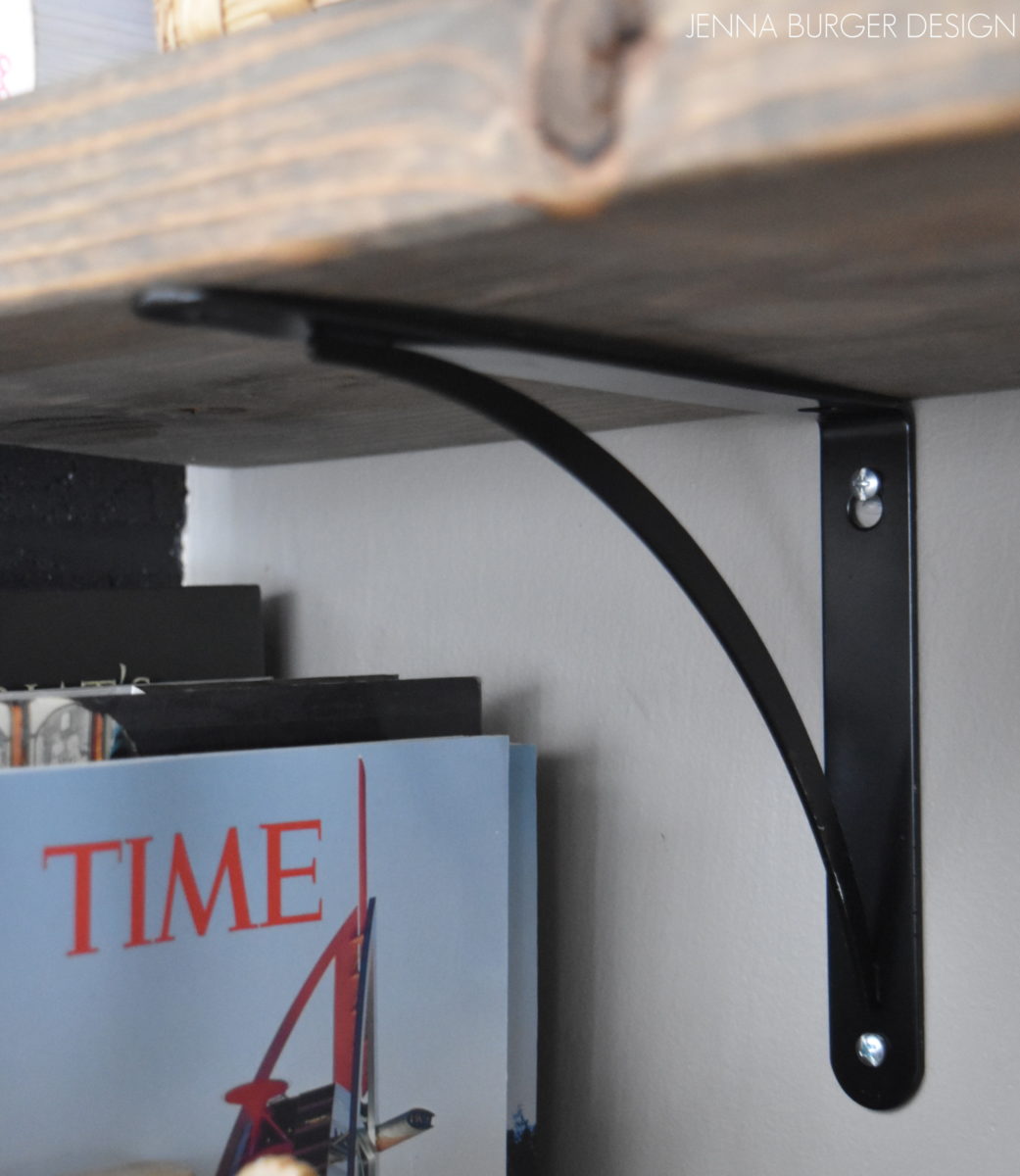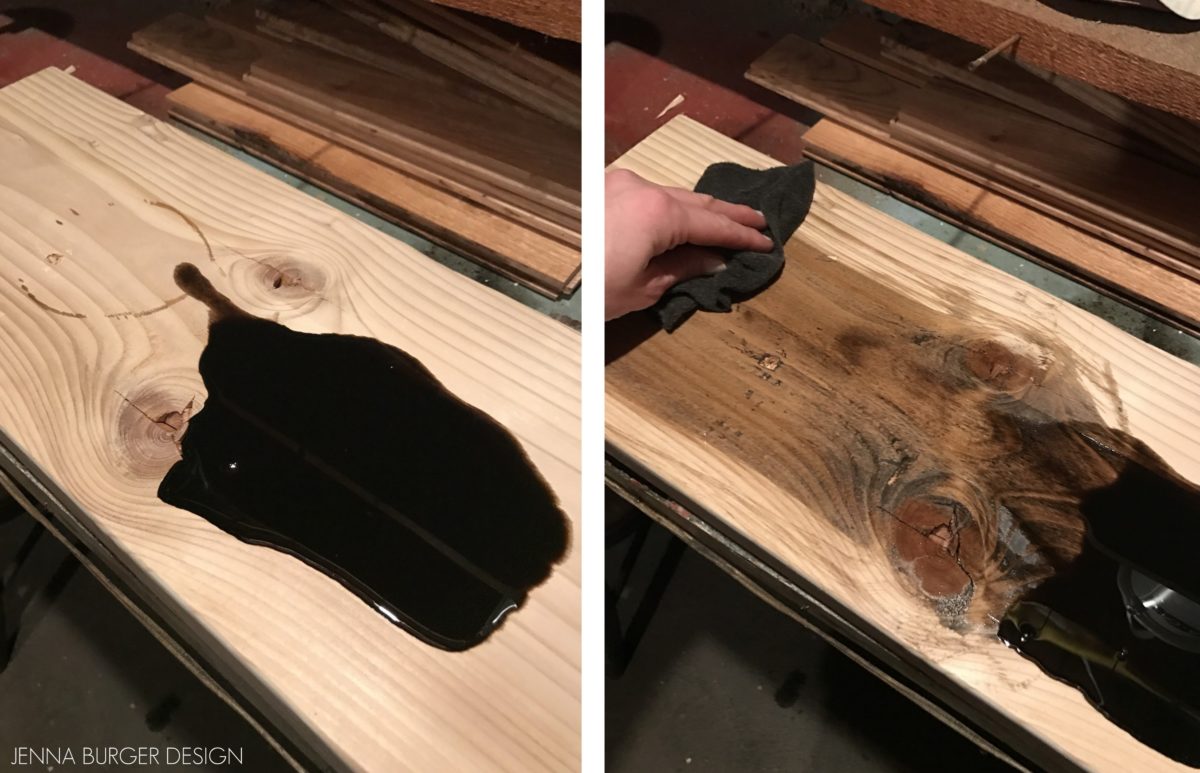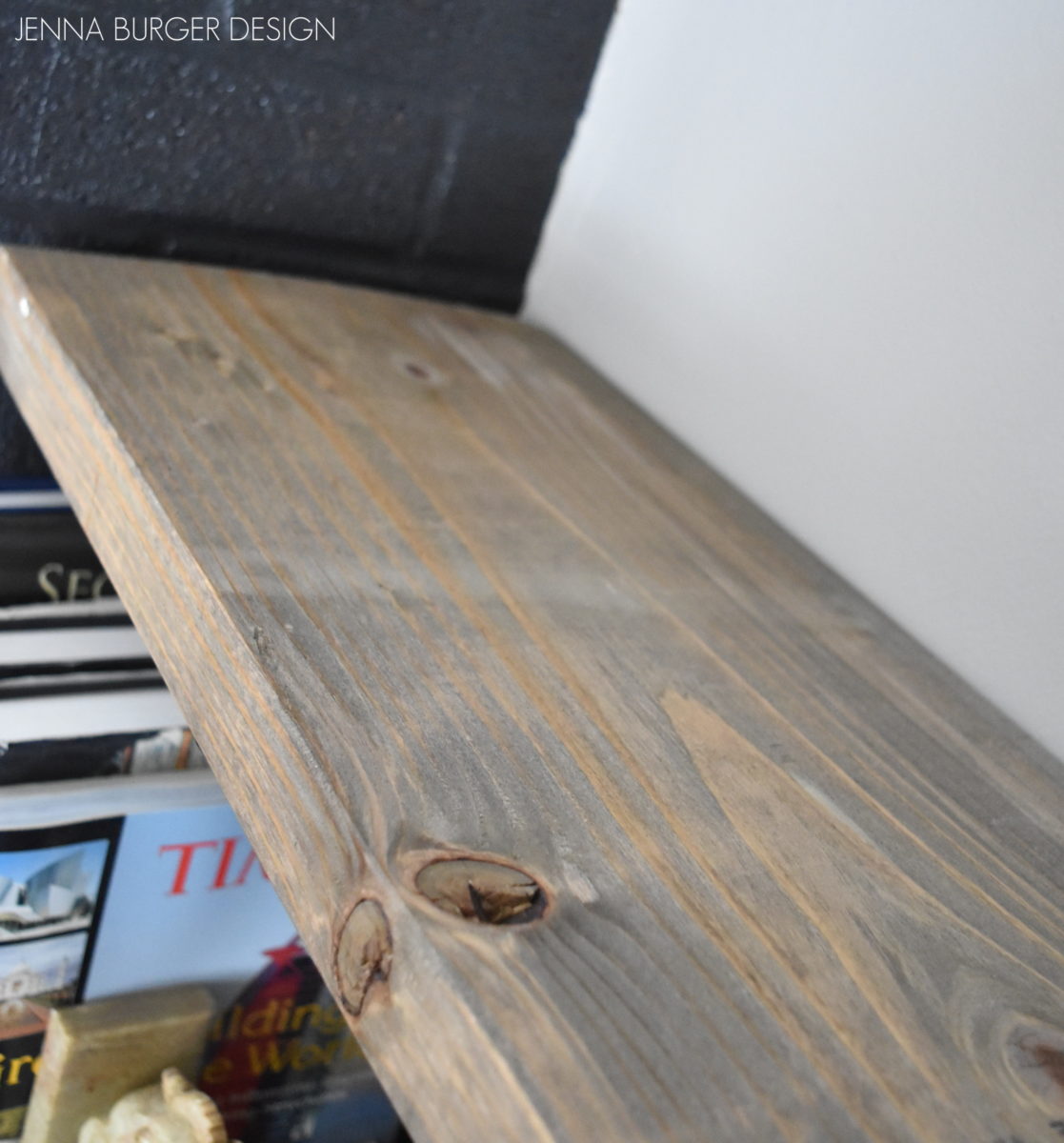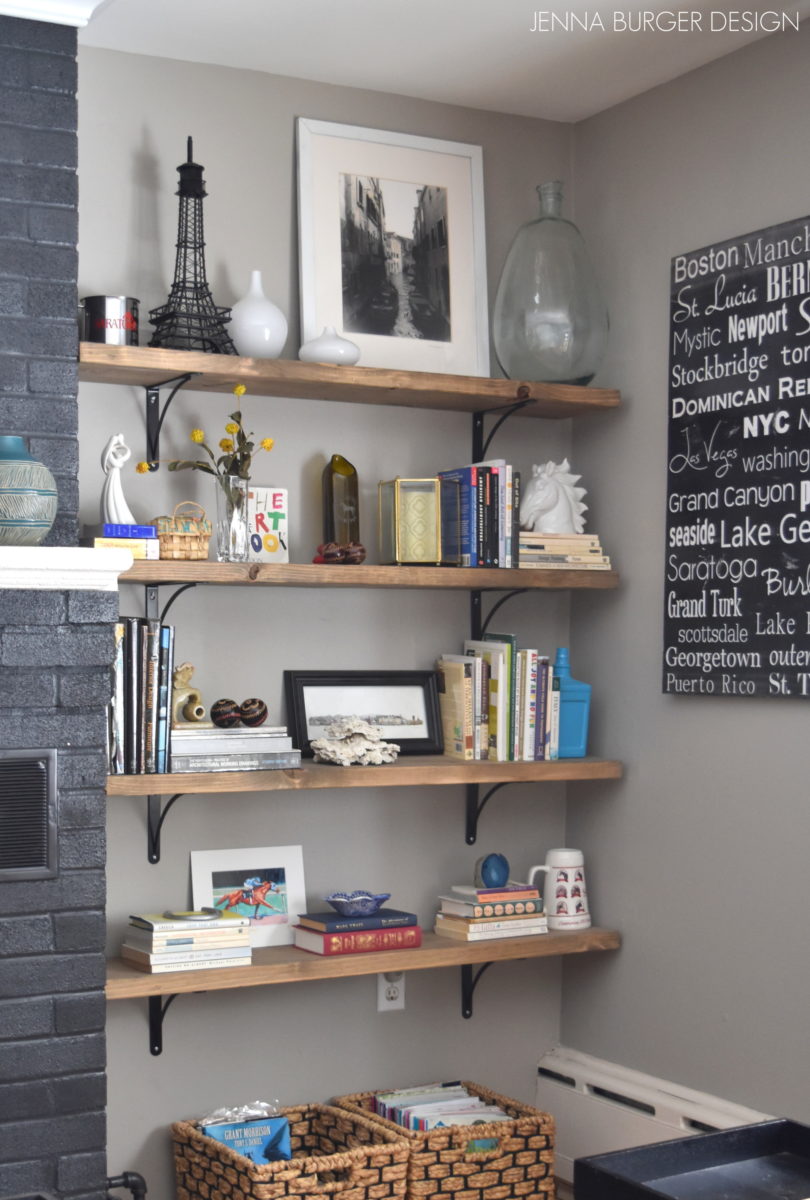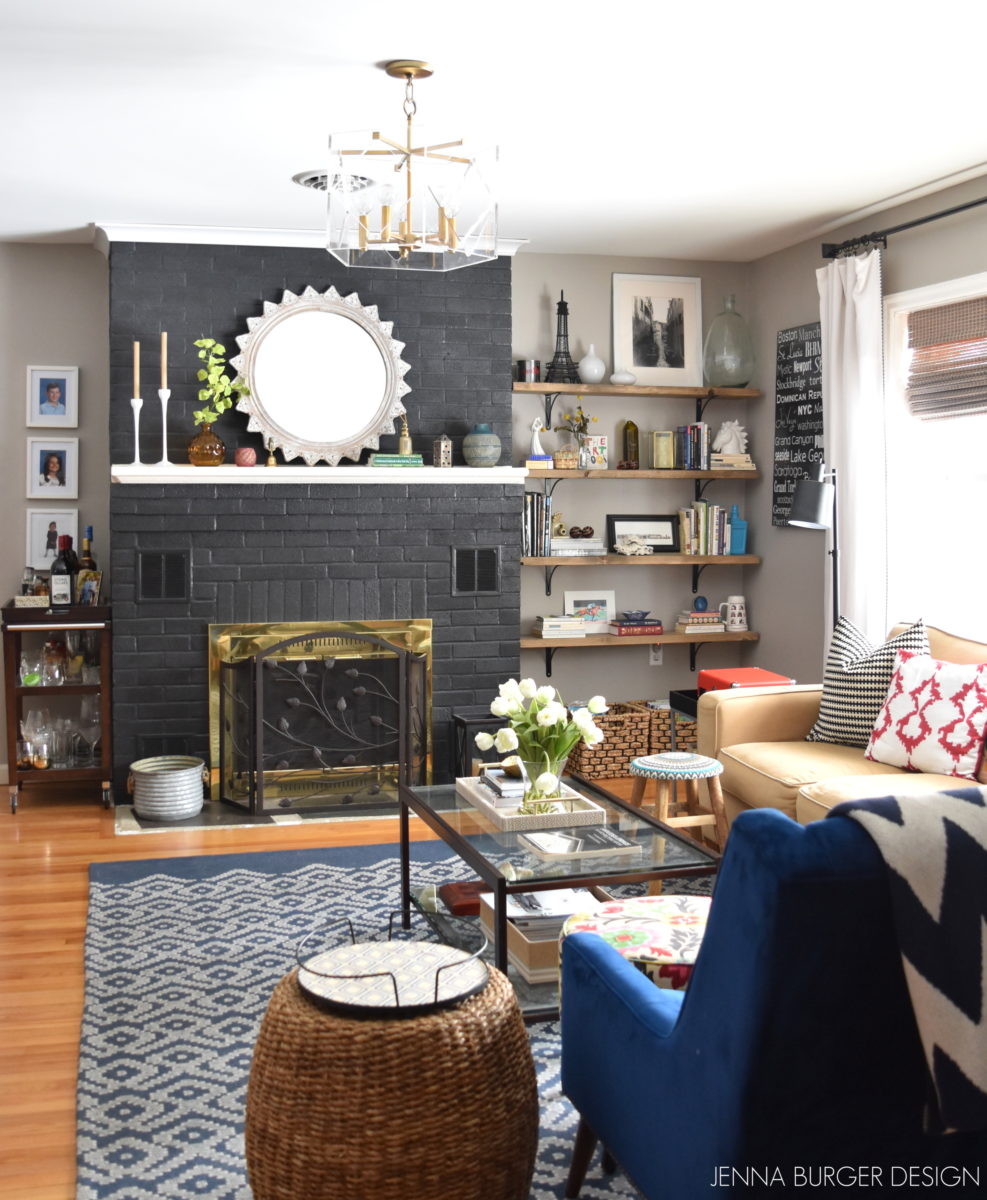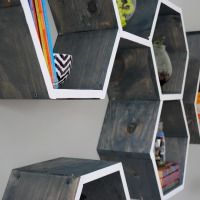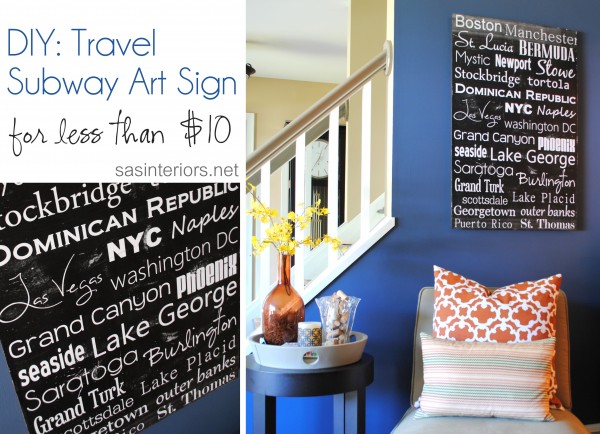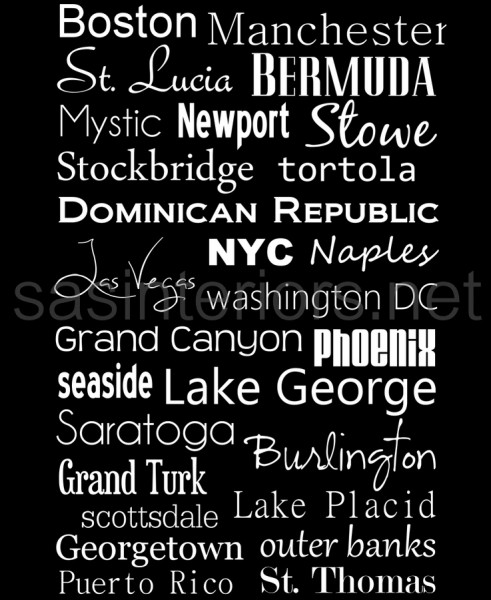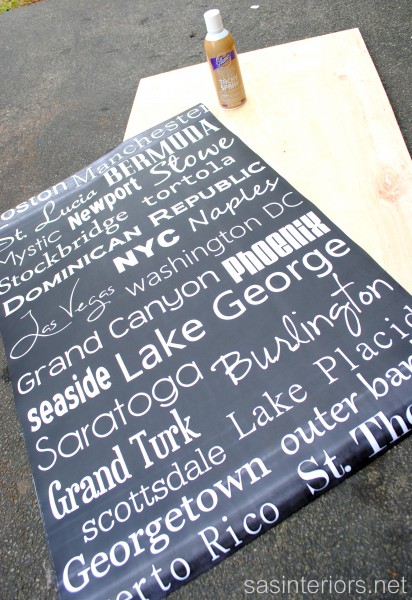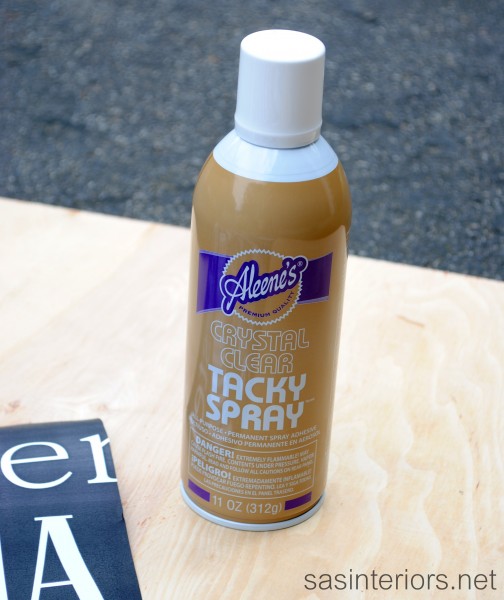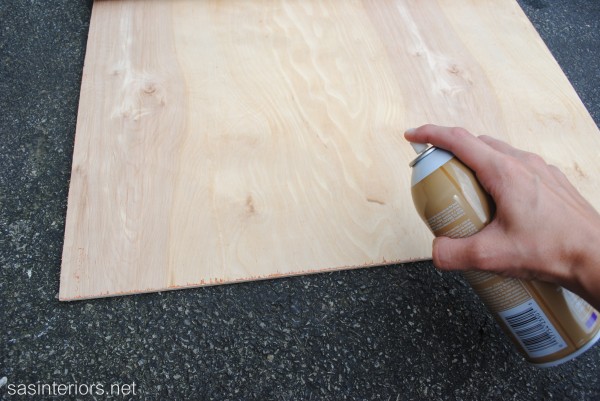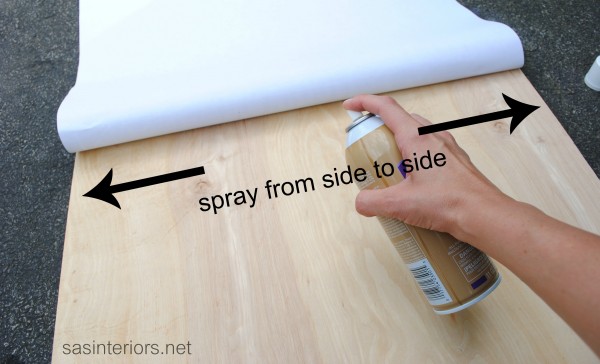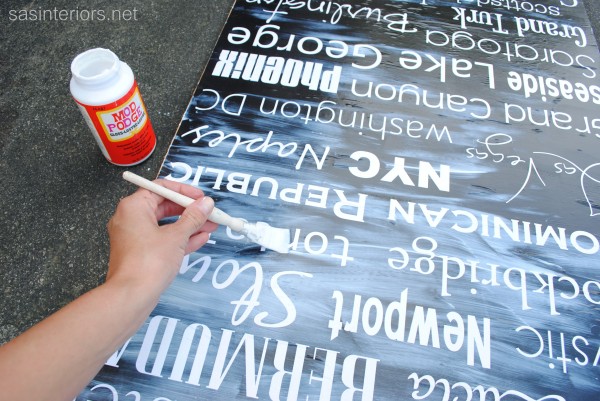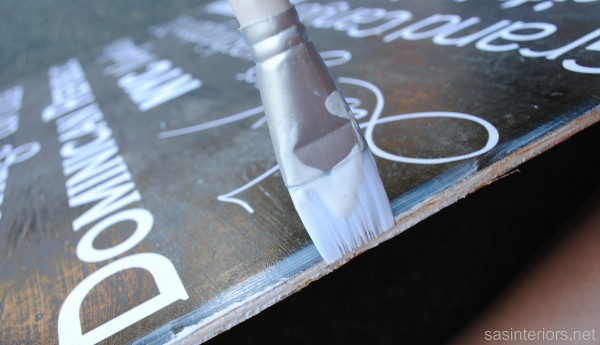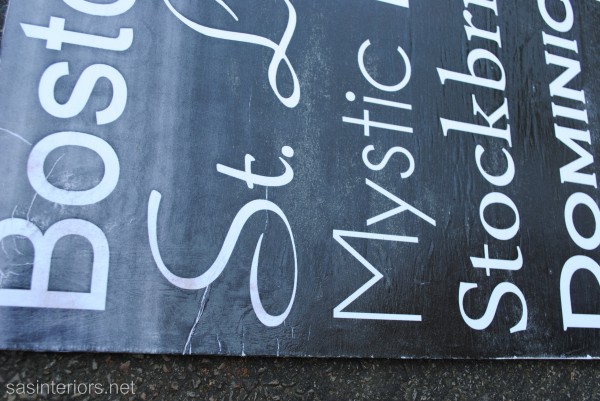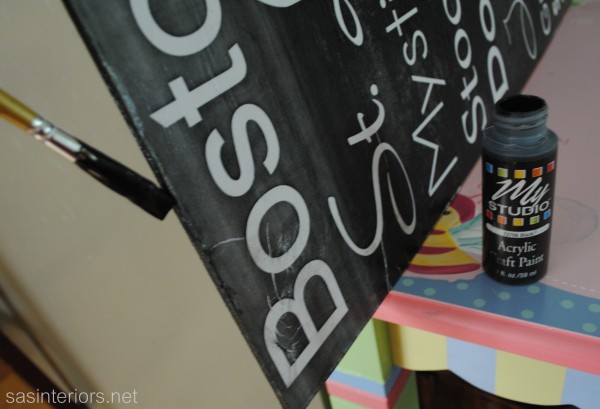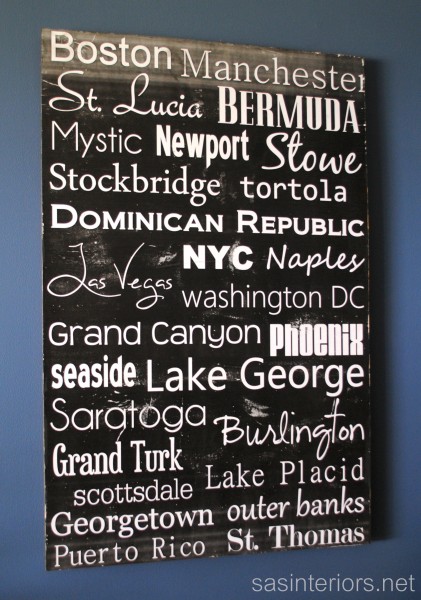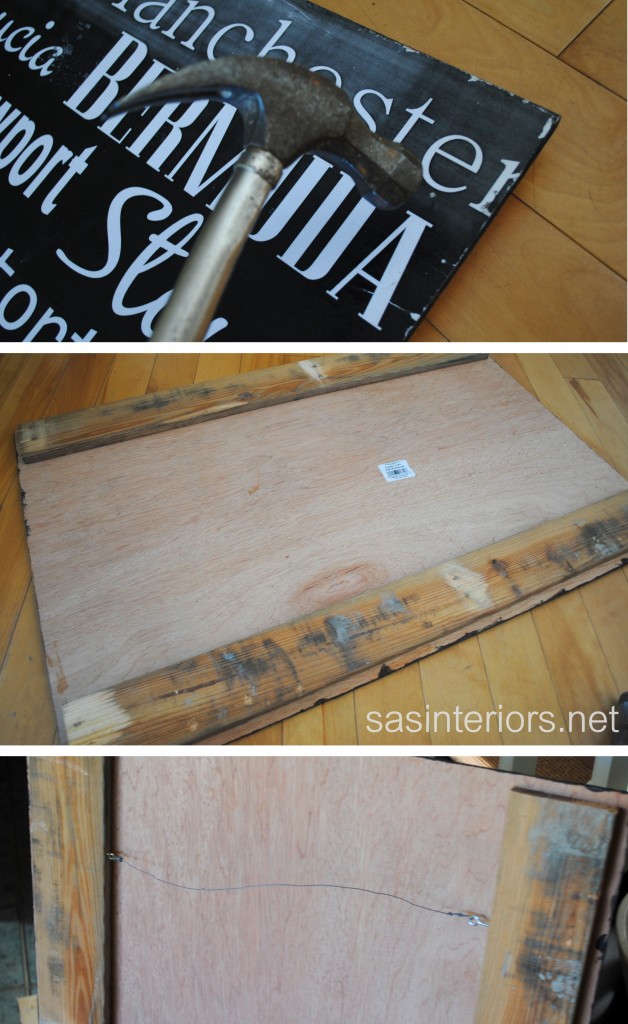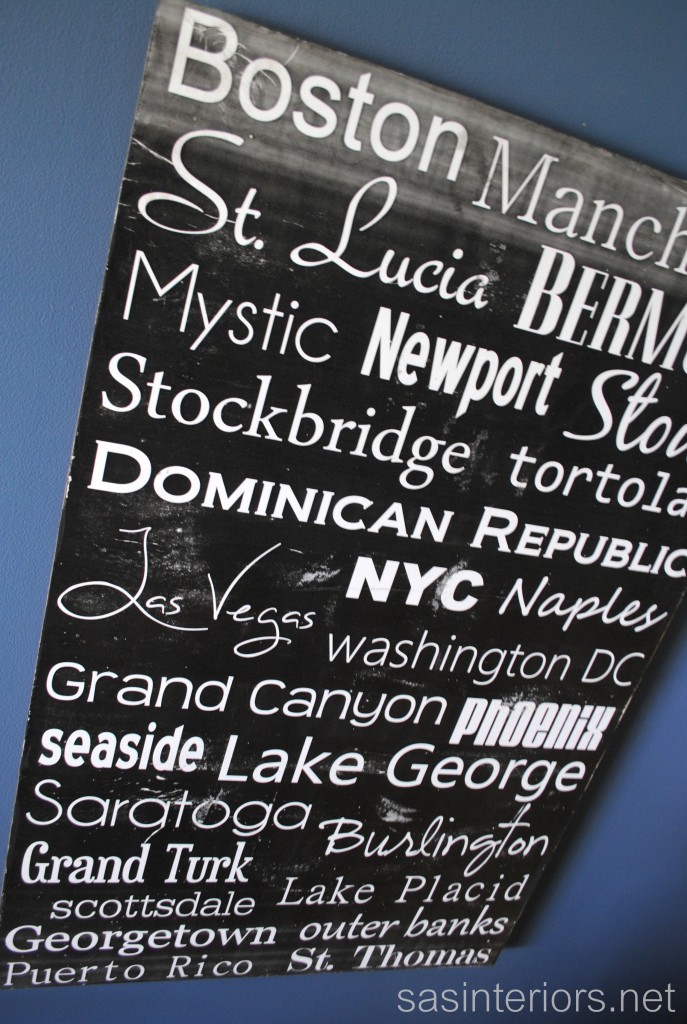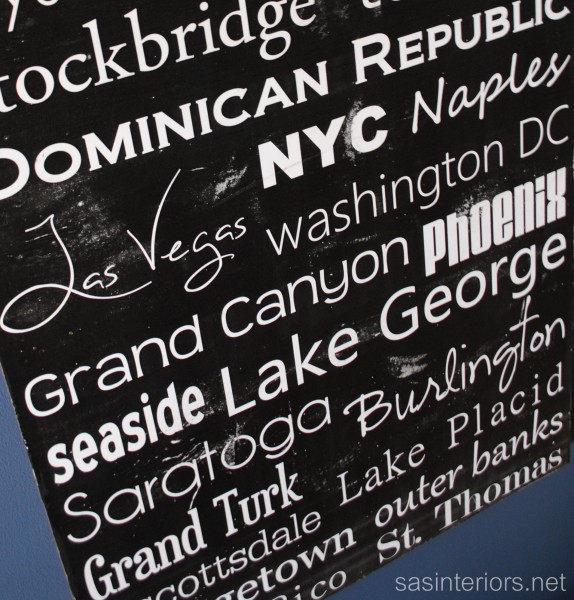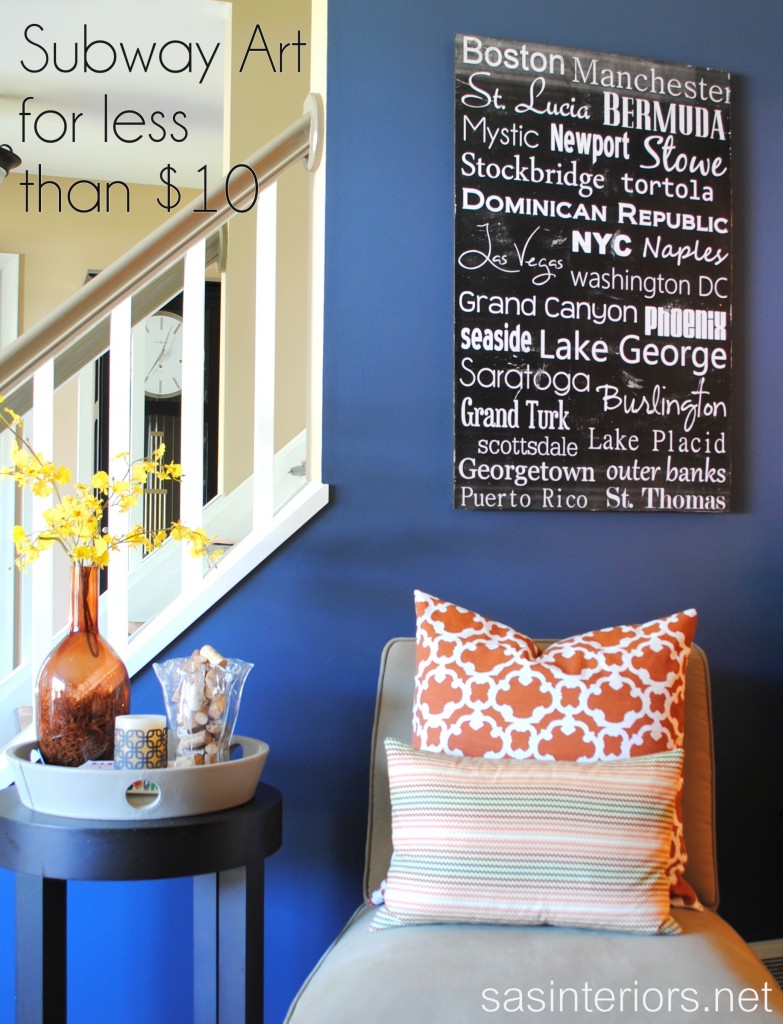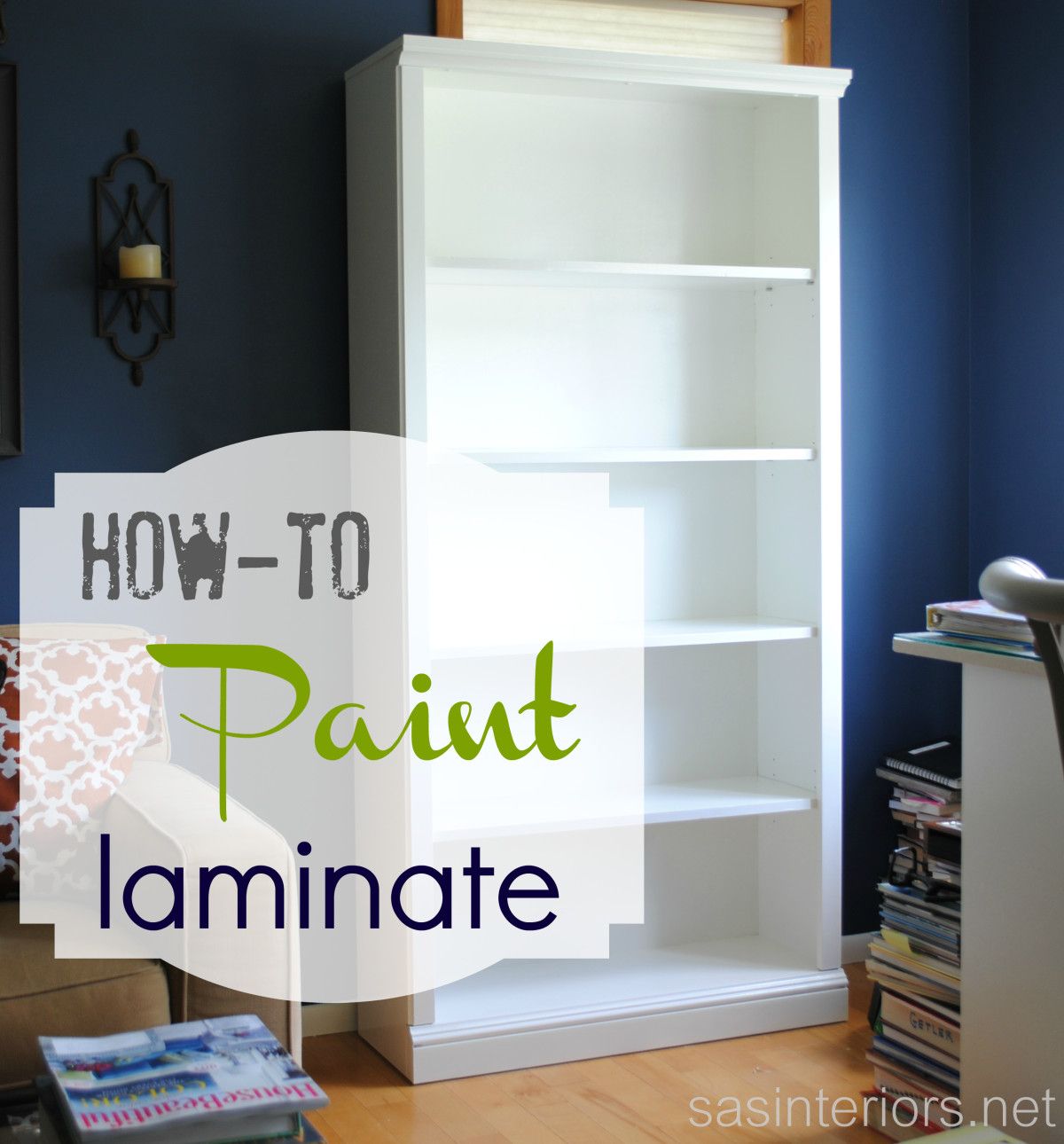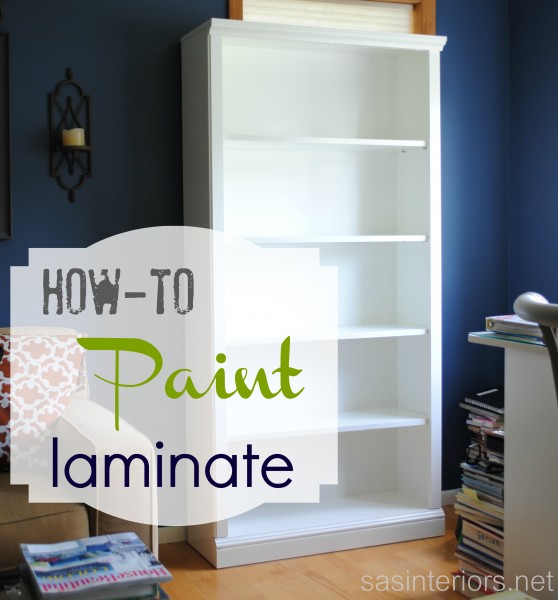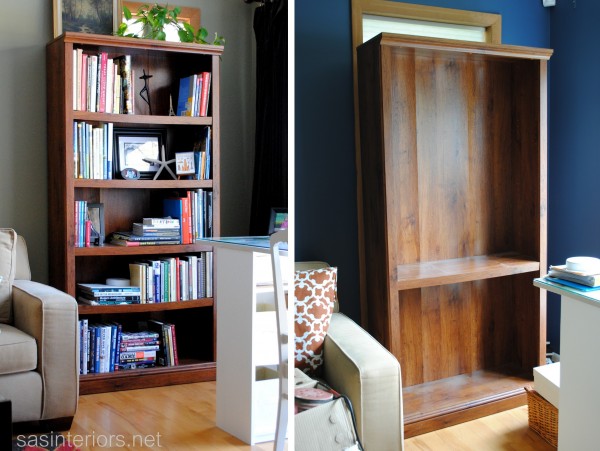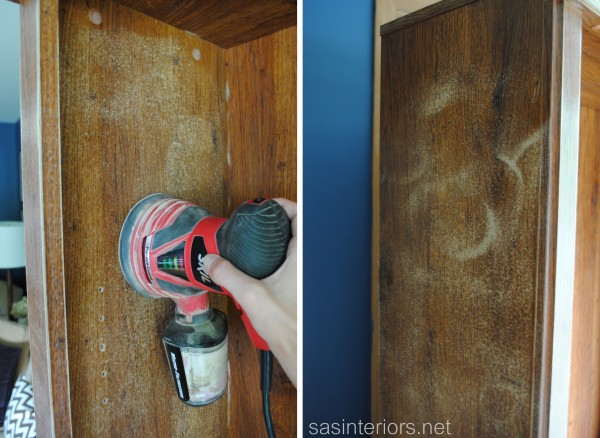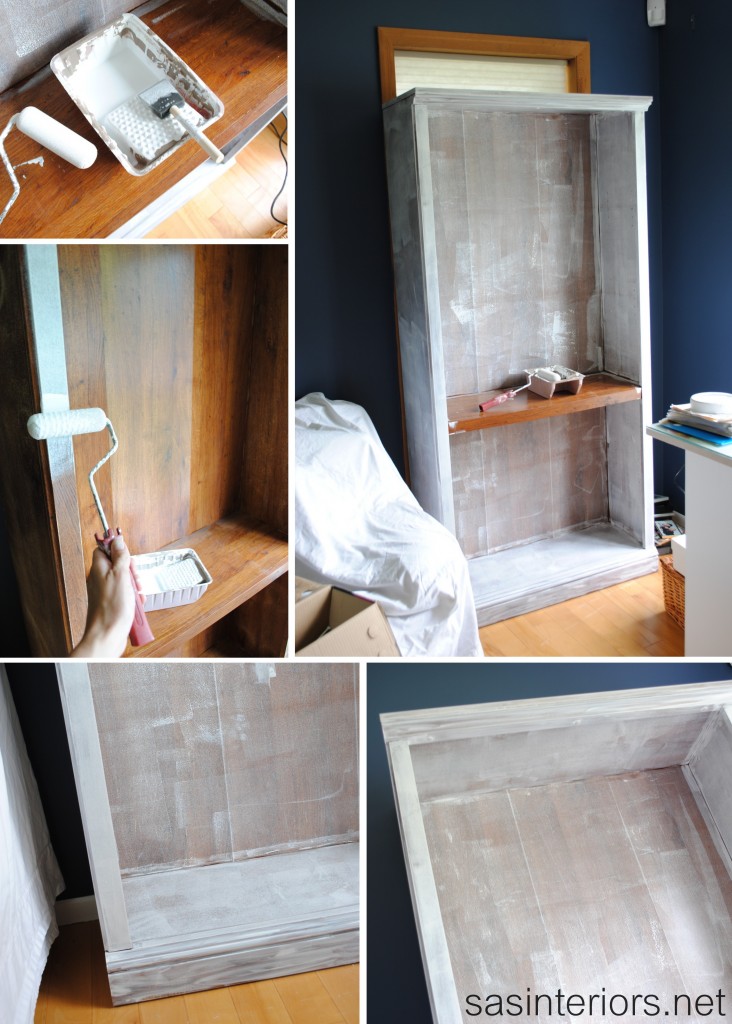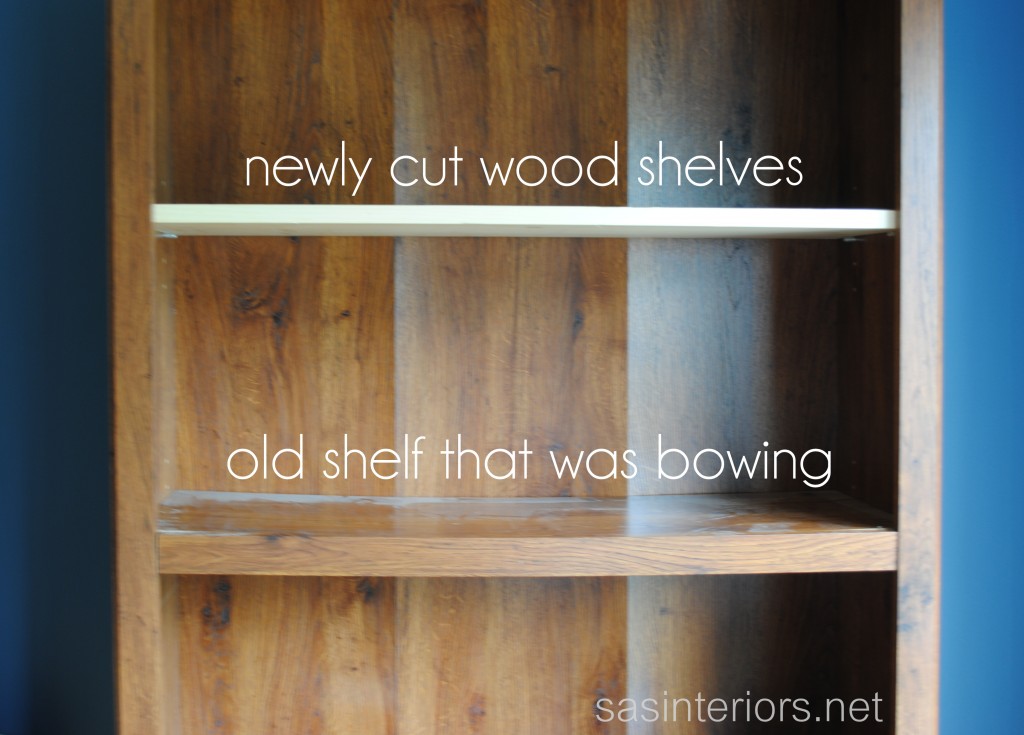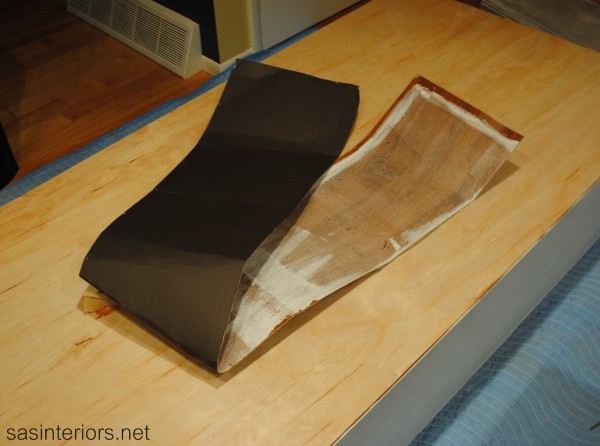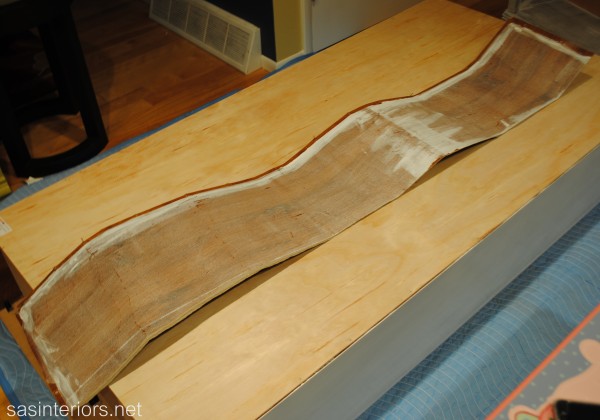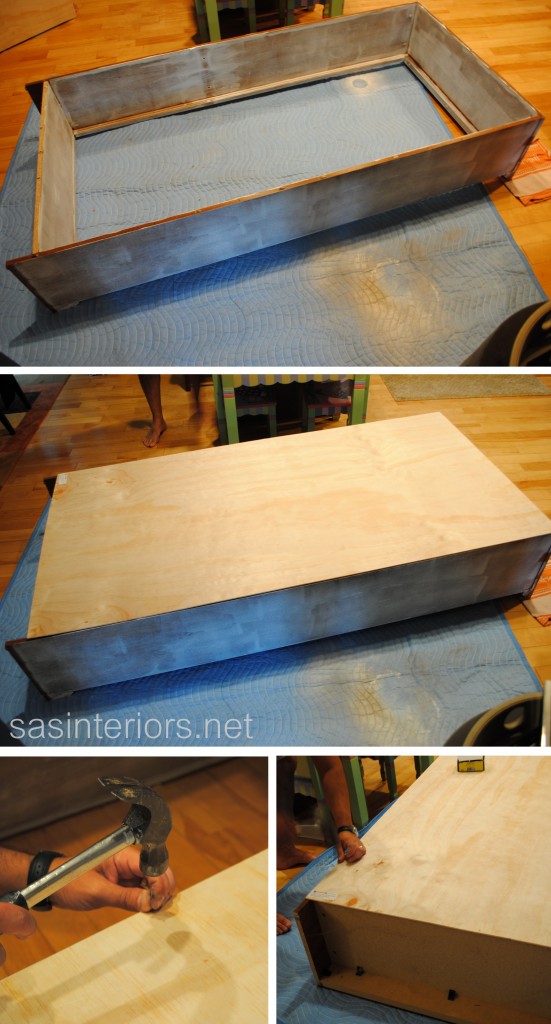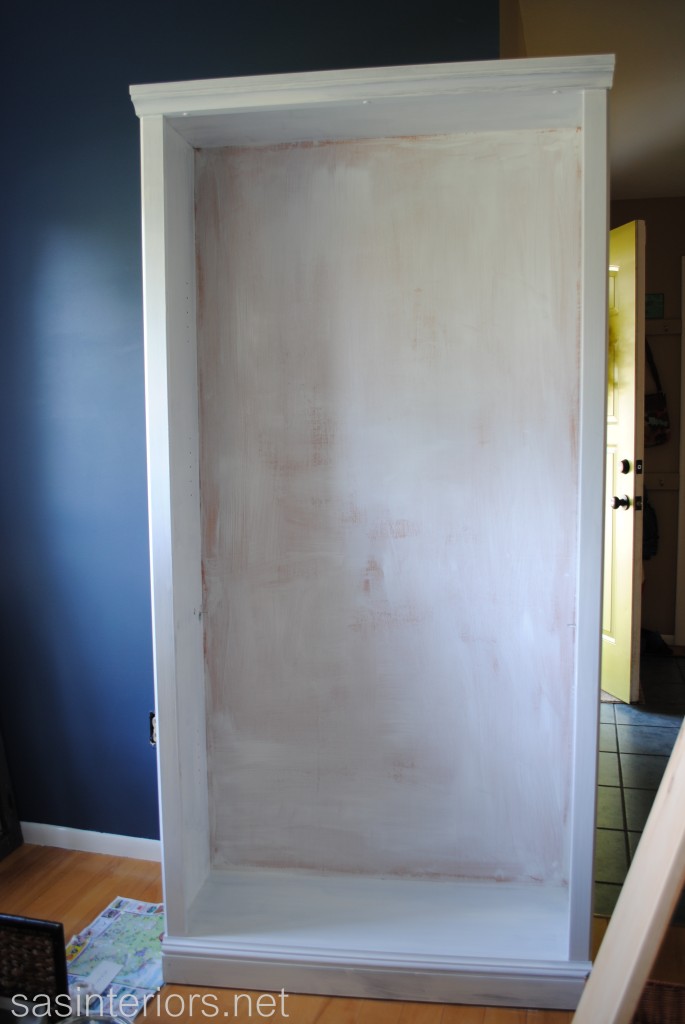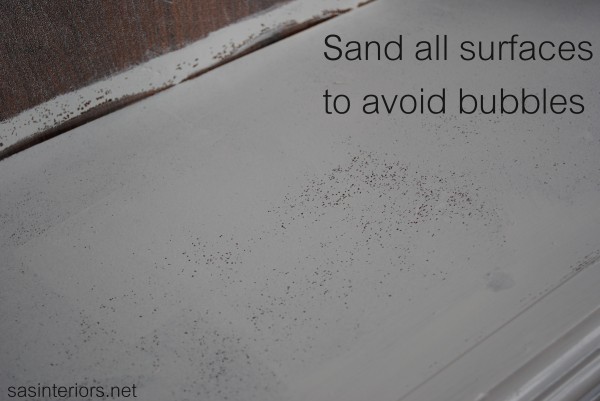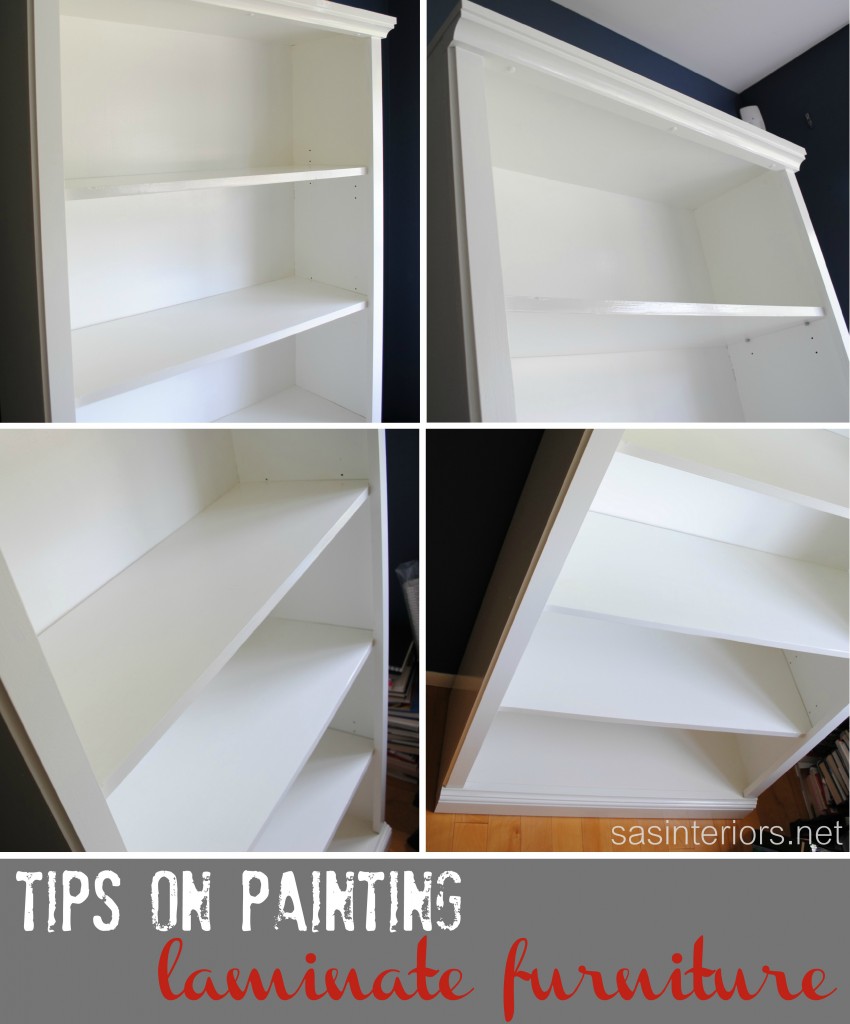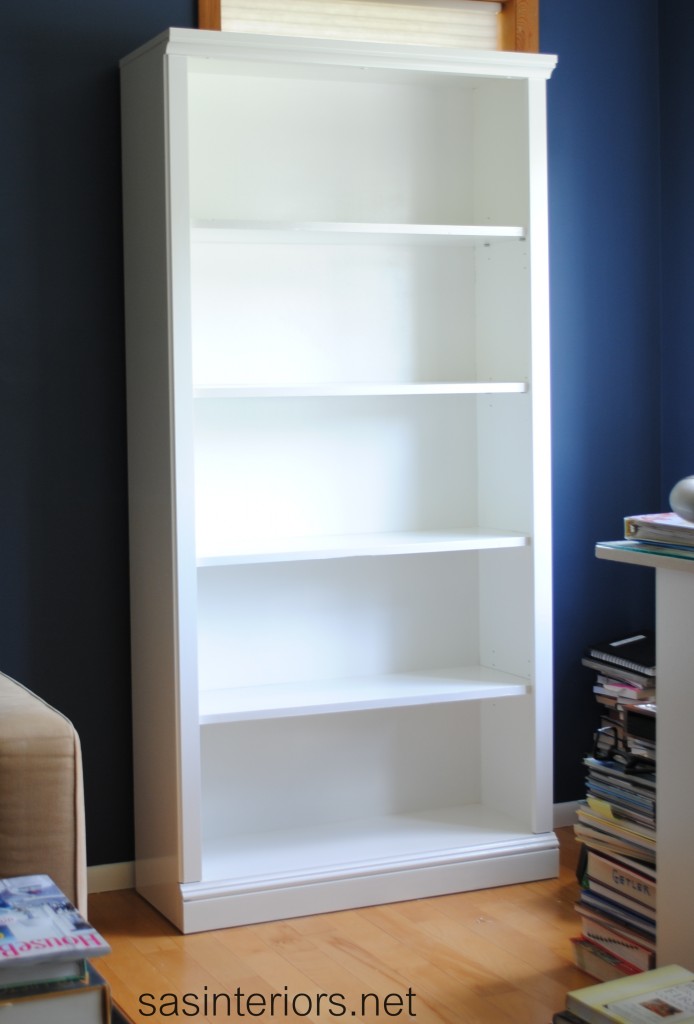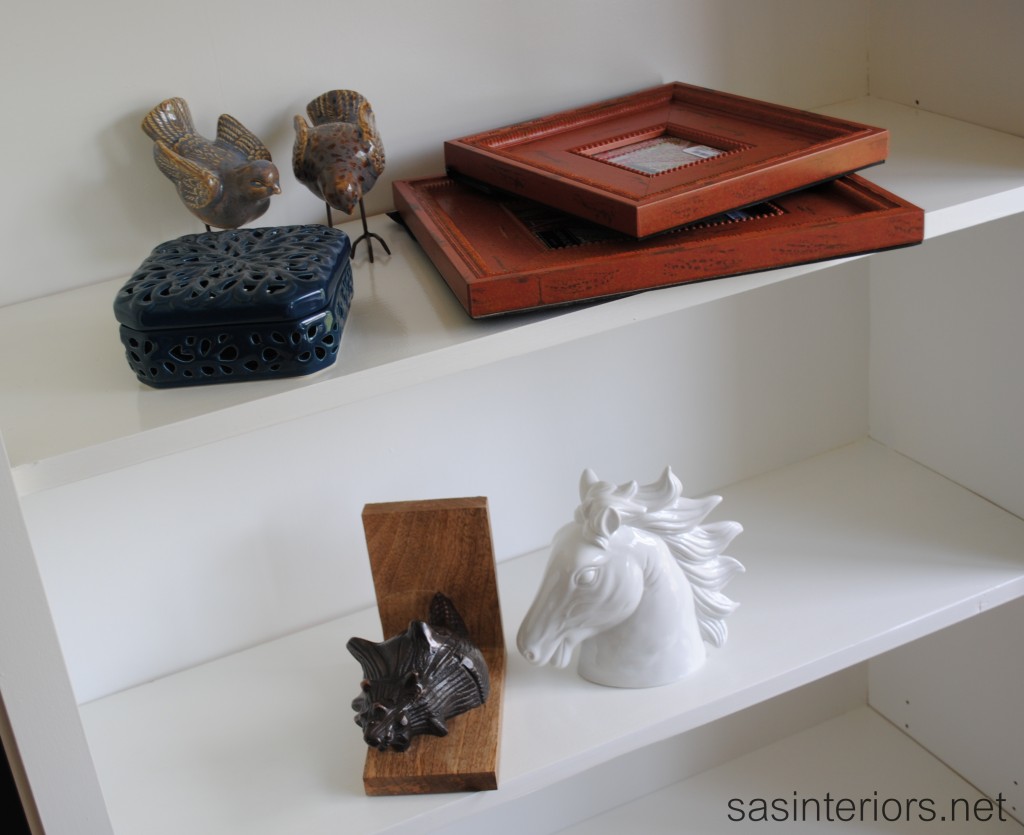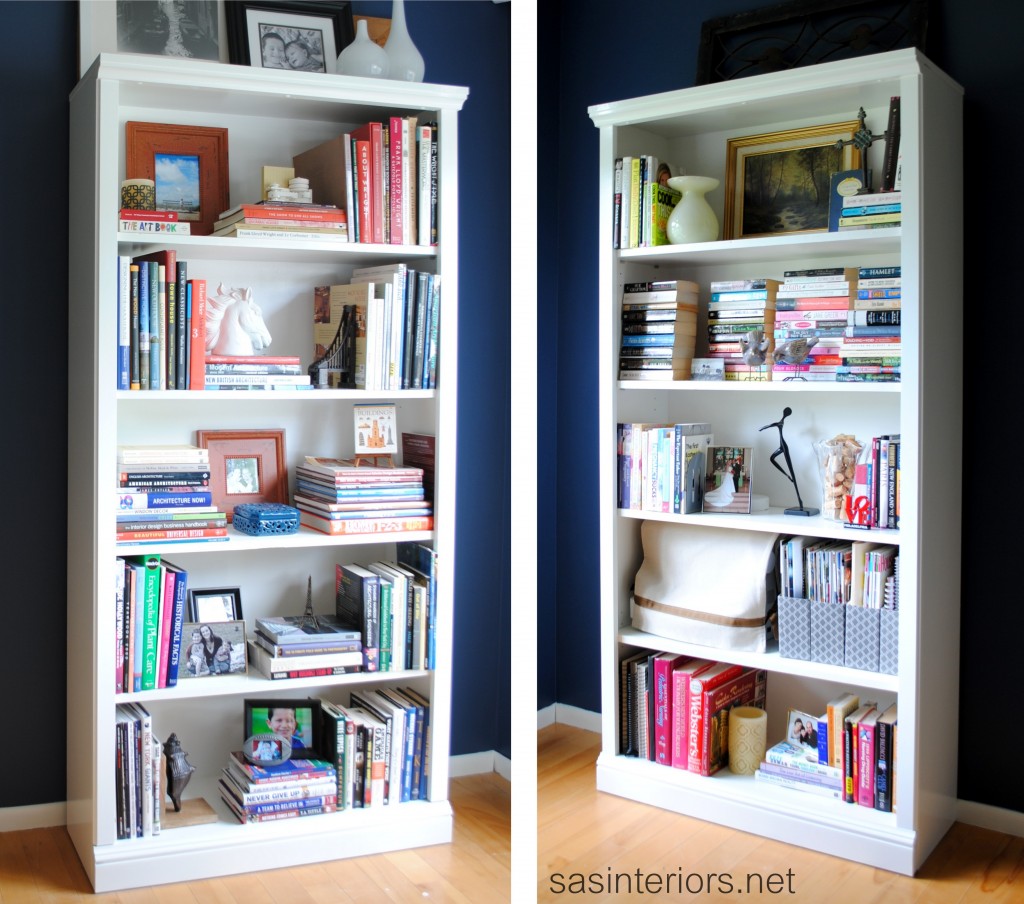Even though we veered away from the original design for the revamped shared kids space, my son had his heart set on honeycomb shelves after I showed him the Land of Nod style. And since this mama can’t let her boy down, I had to pull through.
But instead of buying, what did I do? DIYed them, of course. After a little research & this post by A Beautiful Mess, I was confident to move forward.
Not only are these honeycomb / hexagon shelves functional, the whole ensemble is like a piece of art. And instead of painting the shelves a color or staining them a traditional wood finish, I chose an interesting blue hue which is in-trend and spot on with the other tones that I’ve introduced into the room.
Take a look…

The entire shelf composition runs the length of the twin bed, which is about 80″ long, and makes the entire wall truly come alive. This “installation” also parallels with my Lowe’s Creative challenge project for this month which focuses on introducing the submerged color trend of watery, cool blue hues into a project. With the size + interesting finish, this project is by far one of my favorites!
———————————–
Before we move forward, it has to be said that this project was a big challenge, but the bigger the venture, the better the result. I don’t often do large-scale woodworking projects and at times I thought it was going to be a big F-A-I-L, but in the end the honeycomb shelves MAKE THE ROOM. Take Away? Don’t be afraid to challenge yourself. Push through because in the end, it’ll be worth it!
———————————–
Like usual, before starting a larger scale project, I sketched out my idea and figured out the supplies I needed. This was the first sketch…

And then the shelves ended up evolving into this layout instead so not all of the shelves are actually attached…

Supplies I used:
- (7) 1″ x 6″ x 6′ long pieces of wood – each shelf took approximately (1) board
- 1-1/2″ wood screws
- 1-1/2″ corner brackets
- Plastic toggle anchors
- Stain or Paint – depending on how you want to finish the shelf surface
- Other supplies: miter saw, tape measure, drill, sander, level, pencil
To save on time, I often have my wood cut while at shopping at Lowe’s, but for this project, I cut it at home because of the quantity needed + the angles.
Here are the steps I took:
1. I set the miter saw to 30 degrees and never touched the saw again for the entire project. This angle is crucial so each of the 6 pieces will make the perfect hexagon shape. I approximated that I wanted each finished shelf to be an overall dimension of about 14″ x 14″, and chose the length of 7″ for the long side of each piece.
After marking the wood with my tape measure + pencil, I made the first cut using the miter saw. Then I flipped the piece of wood over to make the second angled cut.
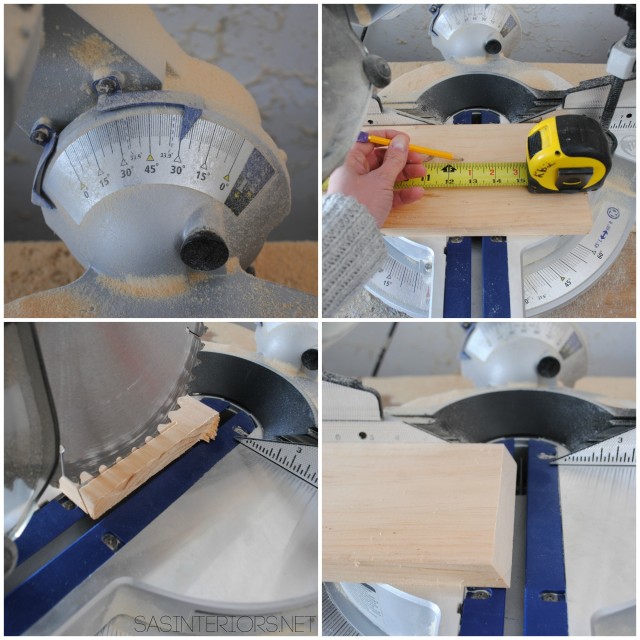
This is what the first piece looked like when cut.
Then I cut about 42 more…
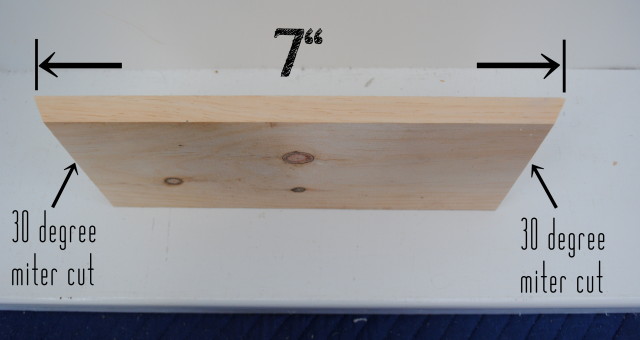
2. Before taking the next steps of attaching each piece to make the shelves, I layed all the pieces out to see how they’d actually go together.

3. Then we were ready to chug forward and attach these bad boys…
The first hexagon box was created using 6 pieces and all the angles faced each other. It’s best to stand them up on their sides, so the floor acts like the wall. The Mister (who was a huge part of this project as well) and I actually moved from the carpet to a flat, hard surface so the pieces would lay flat. The carpet was too cushy.
TIP: You must use wood screws for this project. We started out with screws, but it wasn’t working right (because we didn’t pre-drill), then changed over to using nails. BIG MISTAKE.
Once you have the angled wood pieces in position, first pre-drill the holes, then drill in the wood screws. If you don’t pre-drill the holes, the wood will probably split, which is what happened to us atfirst. Using a nail won’t work because they’ll pull out and the overall shelf won’t be stable / sturdy. Believe me, these are all lessons we learned along the way!

4. When the first box is complete, you can either be done or add on to it to create a multi-honeycomb shelf like ours. If you continue adding on to the first hexagon, you’ll use one side of the original hexagon to create the second hexagon. This time though, the cut angles won’t touch each other, but instead overlap. I’ll be honest, it does get tricky at this point and the shelves become a big jigsaw puzzle. We ended up with (1) 3 box shelf, (1) 2 box shelf, and (1) stand alone shelf.

Once all the shelves were screwed together, we were ready for the next steps… finish the surface + install.
It took me some time to determine how I wanted to finish the shelves. At first I was going to paint them, but then steered away because I wanted to see the wood grain shine through. That meant stain. But, what stain? In the end, I chose a gray / blue water-based stain by Minwax. The submerged color seemed perfect with the other hues in the room and was ideal with what’s on-trend right now.
5. First, I gave the edges and all the surfaces a good sanding with my orbital sander. Then using a rag, I applied the wood stain and almost instantly wiped it away so very little actually soaked into the wood. Because of this, the drying time was very quick.
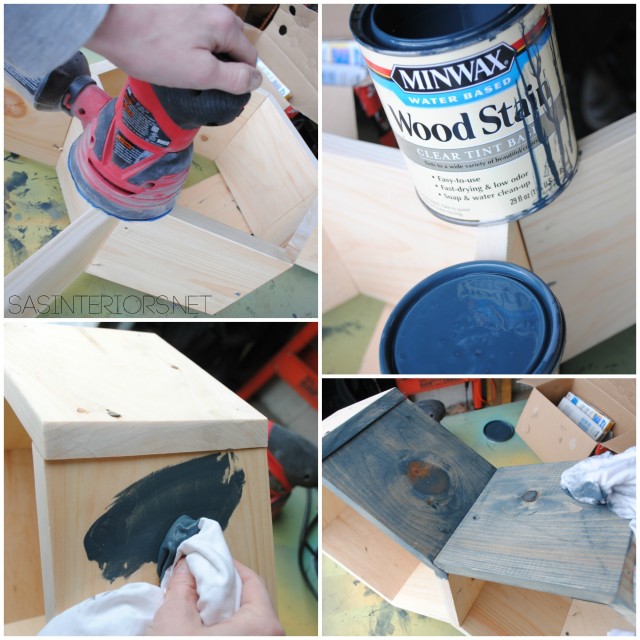
6. About a day later, the shelves were ready to install. I first attached the metal angle brackets to the shelves. Then I determined the height + positioning of where the shelves would be hung.
Next, the Mister + I marked the holes through the brackets and pre-drilled the holes into the wall. As with hanging anything, I always love using plastic toggle drywall anchors (I shared a pic recently on Instagram).
Once the anchors were in each hole, we repositioned the shelves in place and screwed them in using a drill + screw. It’s key to use a level as well so the shelf doesn’t get installed crooked!
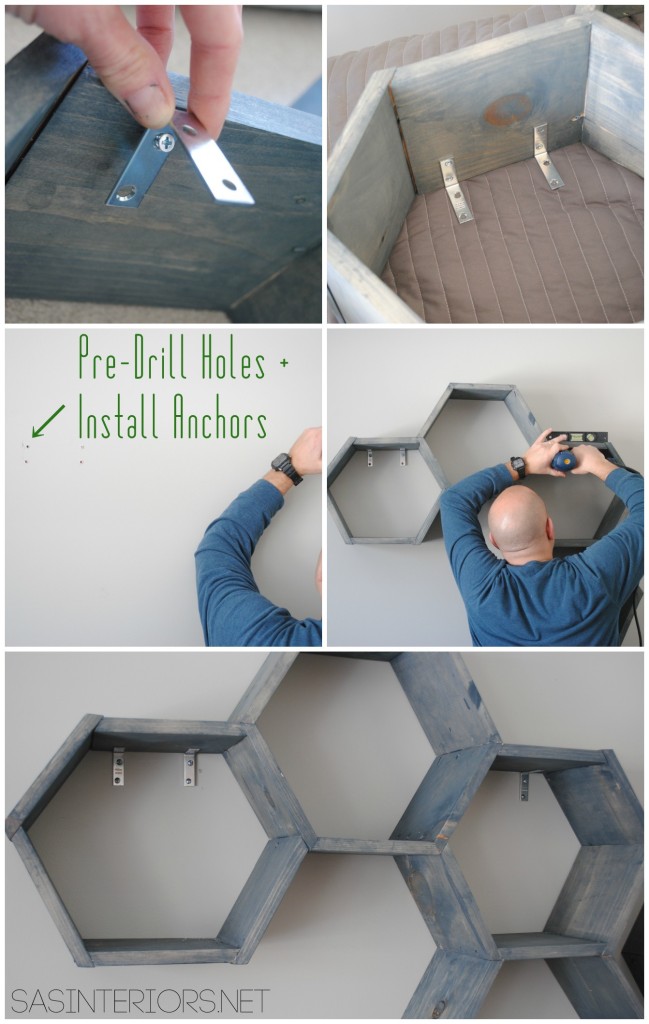
At this point, the shelves were almost done…
I loved the look of the blue shelves against the lighter gray walls, but I still wanted to make them pop. To do so, I chose to paint the front edge of the shelves a white color which matches the moulding throughout the room. Two coats later with a small, flat brush did the trick.
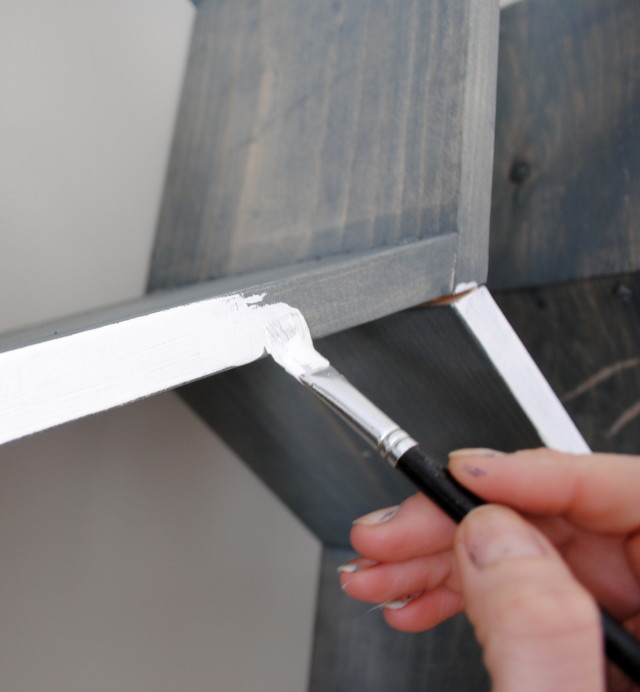
Lastly, so the metal brackets didn’t stand out so much, I painted those as well using the wall paint color.
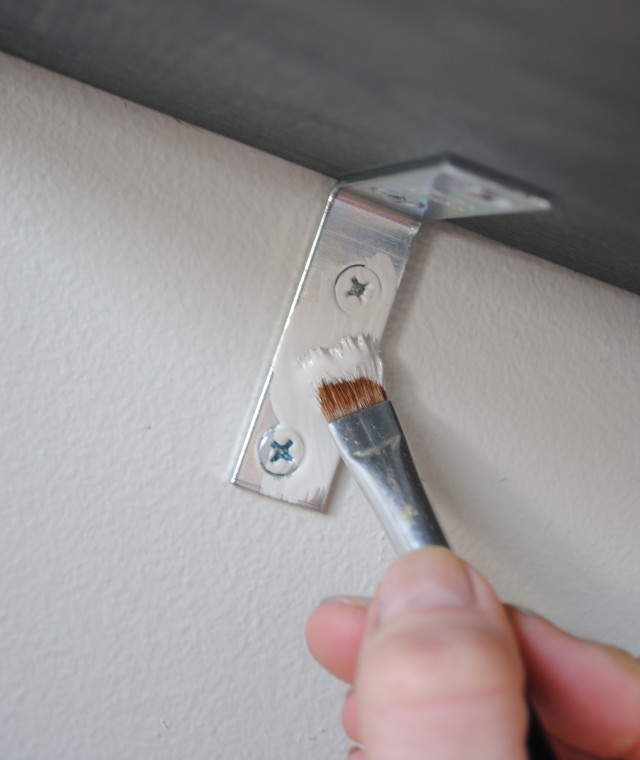
And then they were finally complete!
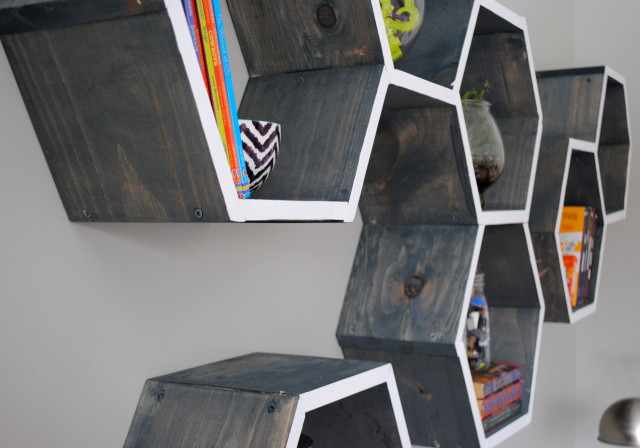
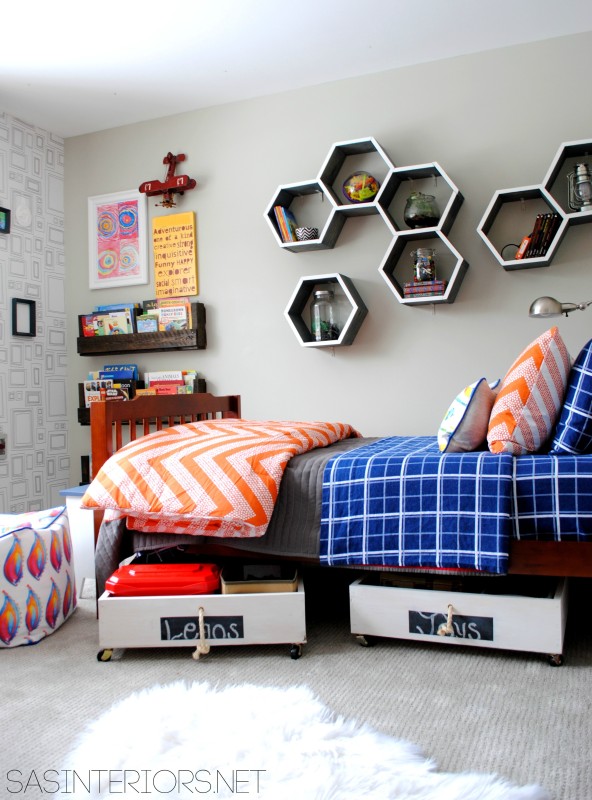
Love the under-the-bed wood rolling carts? I shared the tutorial on how to make them earlier this week.
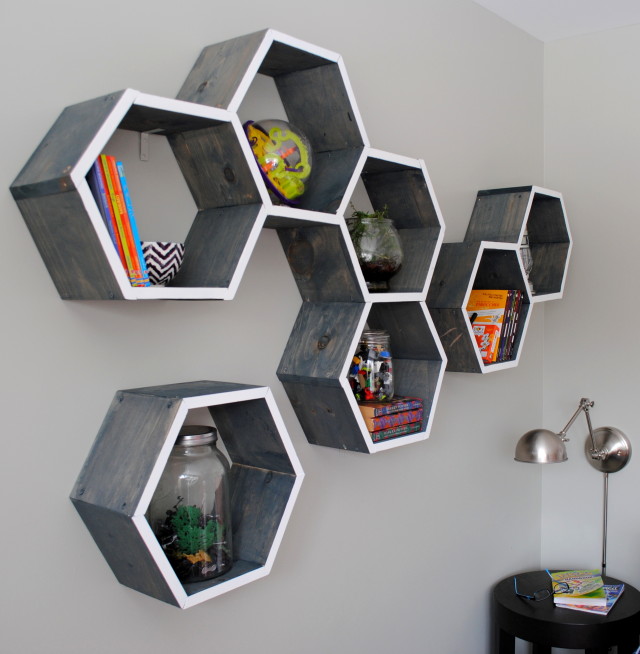
These shelves are perfect to fill with books, toys in containers, and any fun thing(s) to display.
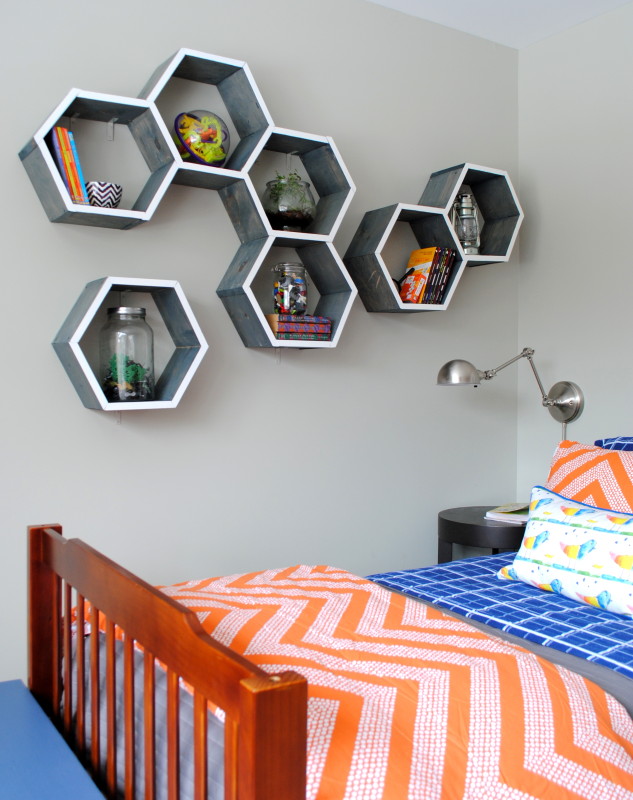

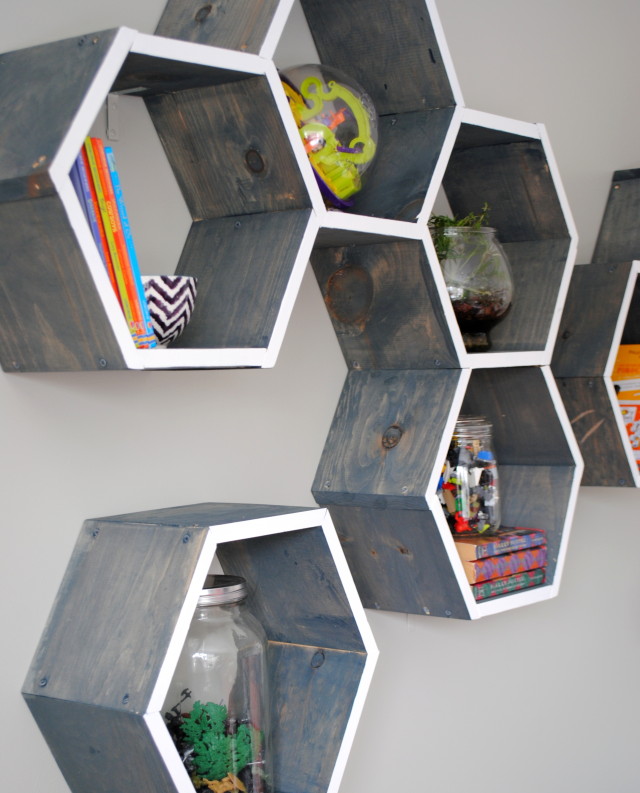
And here is a pretty pinnable picture if you want to remember this project for a later date…
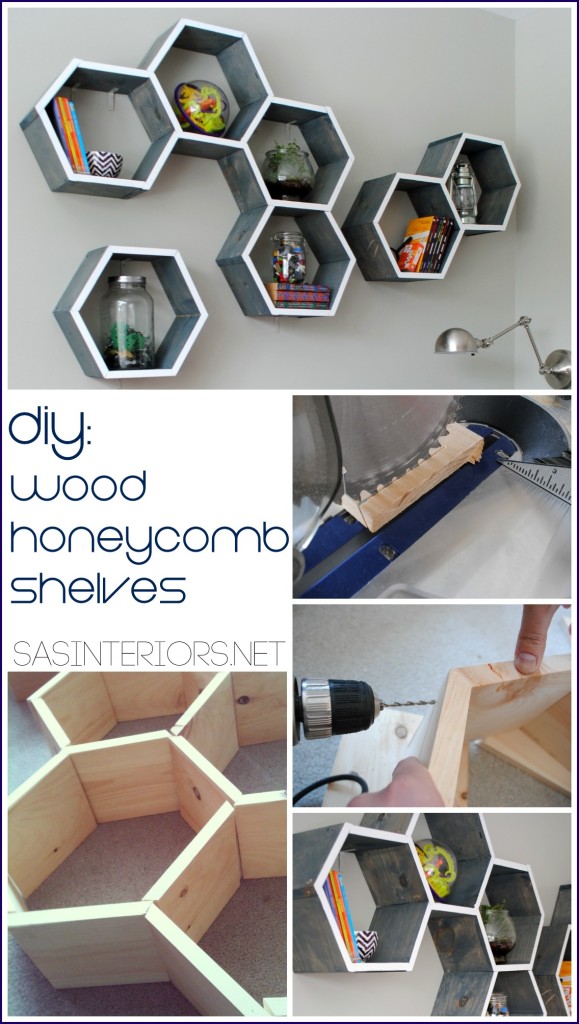
So what do you think?
Do you like the honeycomb / hexagon look? Have you incorporated this new trend into your home? What has been your most difficult DIY project endeavour?


To gather even more unique, fun, and creative ideas for your indoor and outdoor Spring spaces, I would definitely suggest downloading the Lowe’s Creative Ideas app on your iphone and/or ipad. I’m always checking out the FREE app for great seasonal + do-it-yourself inspiration.
Also consider following Lowe’s on Facebook, Pinterest, and Instagram as well.
Disclosure: I am part of the Lowe’s Creative Team and was provided with a Lowe’s gift card to purchase items for my project. I was also compensated for my time to use the products. No one told me what to create, what to buy, how to use the product, or what to write. All opinions are 100% mine!
